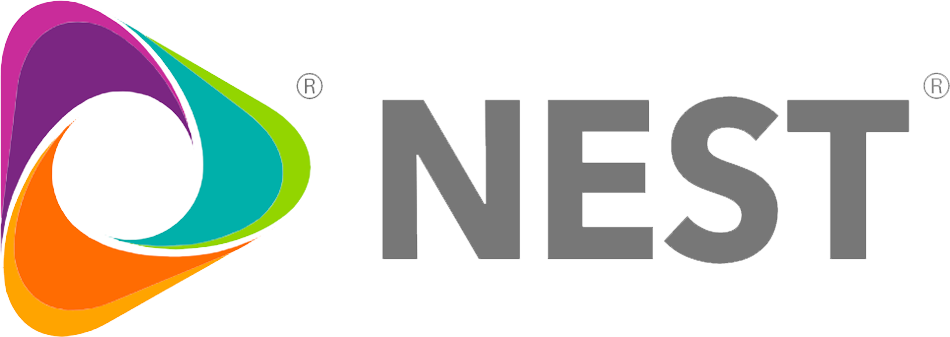Modern work order management software (WOMS), such as NEST’s Facilitate, streamlines workflows and efficiently captures historical data for companies using work orders for the care and maintenance of its locations and equipment, numerous repetitive tasks, or all of the above.
WOMS’ utility for many businesses, then, is hard to overstate. Let’s look at when businesses need work order management software in more detail.
First, What’s a Work Order?
A work order is used to track the workflow of a task or project and typically documents resources, such as parts and labor used in the process.
For example, a facilities management (FM) professional working for a retail apparel chain may open a work order to address a failing HVAC unit. At a minimum, the work order will include the store location and a malfunction summary. Sometimes, the work order will require review and approval from a second staff member before it’s assigned. Once approved, the work order is assigned to a service provider to complete the repair.
The service provider will update the work order with a diagnosis of the HVAC malfunction and steps taken to repair it. Once the repair is completed, the work order is closed and filed. The data collected during the work order lifecycle can be used to keep a record of activity and provide metrics for performance reporting.
Types of Work Orders
Work orders are generally organized into two types: “unscheduled” and “scheduled.” An unscheduled work order is for an unplanned event, such as the HVAC repair described above. This is also called “reactive maintenance,” because the repair is performed in response to a malfunction.
A scheduled work order is completed before a malfunction occurs, to evaluate performance and prevent future problems. This is often called “preventative maintenance,” because it’s designed to prevent malfunctions before they occur.
Sometimes work orders are also characterized as “internal” or “external.” This indicates whether an internal or external team member will do the repair or maintenance work.
Manual Entry of Work Orders Can Be Onerous
In its simplest form, a work order is a piece of paper with information updated by hand. It’s typically transferred to at least one other person一sometimes several一and back again. This approach is time consuming, and can easily lead to errors and misplacement.
Even if work orders are managed with a spreadsheet, data entry is typically done manually. If multiple people have access to the same spreadsheet or copies are created, version control can be problematic. This approach is also time consuming and can lead to version confusion, delays, and errors.
Accessing and analyzing historical work order data is especially challenging with manual entry methods. Trends and patterns are often hard to recognize, scenario analysis is also a heavy lift, and deploying insights in real time is almost impossible.
WOMS Vastly Improves Work Order Management
Modern work order management software, such as Facilitate, enables users to track work orders via a web-based, centralized database. Workflows are easily updated, often with dropdown menus and automated functionalities. Multiple users can make updates and access data in real time.
WOMS capabilities can vary significantly, but more comprehensive platforms have features such as mobile access, asset history, automatic invoicing, reporting, and many more. Using data to identify trends and uncover insights is also significantly easier, especially when paired with a robust analytics platform.
Work order management software that integrates with existing information systems can also enhance its value. Departments such as finance, sales, procurement, and others can leverage WOMS data to better inform decision making, company-wide.
When to Use Work Order Management Software
Work orders are essential in many sectors and industries, particularly those that rely on heavy equipment, have distributed sites or locations, or undertake repetitive tasks. For example, companies manufacturing goods from packaged popcorn to refined oil use work orders to care for their equipment and facilities.
Regardless of the product, production targets and inventory management depend on the manufacturing process, which requires precisely functioning equipment. Preventative maintenance tracked with work order management software is a key component of keeping machinery running smoothly and minimizing downtime.
Businesses in the real estate industry, such as property management companies, tend to repeat many tasks across their properties, such as leaky faucet fixes, snow removal, and painting. Work order management software can help keep track of these jobs and help identify trends within a particular location, housing unit, appliance, or other component.
FM provides care for the sites, infrastructure, and equipment within multiple industries: retail, health care, education, and many more. Maintaining everything from soap dispensers to snow blowers, lawns, lobbies, and HVAC systems is a complex undertaking requiring significant coordination across a wide array of resources一and usually under tight budget constraints.
Work order management software is crucial to maintaining sight across an FM program, especially for companies with distributed sites or operations. Relying on staff to keep track of the work in progress using manual entry methods is costly, inefficient, painstakingly slow, and essentially unsustainable.
NEST’s Facilitate Can Boost Efficiencies & Uncover Savings
NEST’s Facilitate is a best-in-class technology platform that can enhance program visibility, make work order management a breeze, and drive on-the-ground improvements. Specifically designed for facilities management, Facilitate provides end-to-end work order automation, an intuitive web-based interface, and mobile functionality for access anytime, from anywhere. Agile software development ensures the dynamic rollout of technology upgrades, and users never pay tech or subscription fees for platform access.
With a 360-degree view into operations, FM professionals can easily leverage data to increase program efficiencies and uncover cost savings opportunities. Real-time data exports and integration with existing business systems provide insights to inform firm-level decision making.
Facilitate is at the heart of NEST’s Integrated Facilities Management (IFM) solution, a single, centralized approach to FM that includes an Independent Service Provider (ISP) network, 24/7/365 operational support, powerful analytics, and financial consulting to optimize your FM program and spend.
With NEST as your IFM partner, not only can you revolutionize your work order management process, but elevate your complete FM program to a more strategic footing, too.







